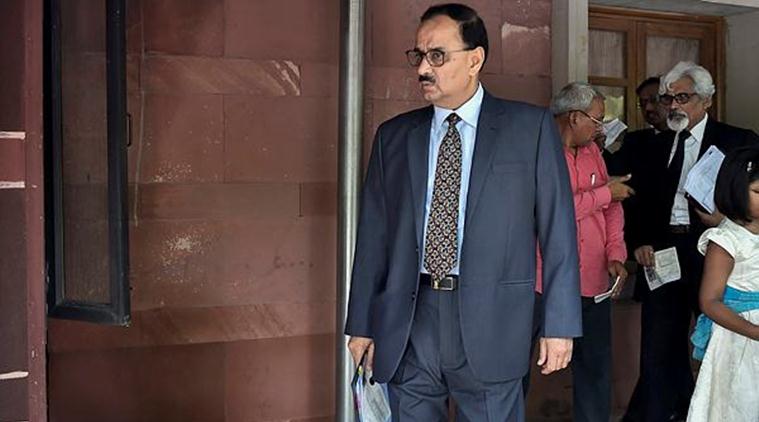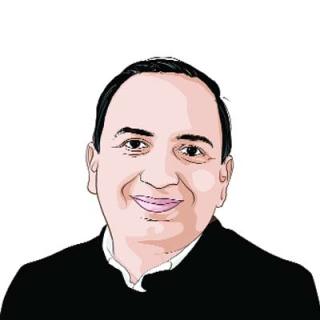The biggest casualty in the Alok Verma affair has been the SC’s authority
The Supreme Court has, in this entire Alok Verma episode, returned one of its most cringe-worthy performances in recent memory.

The ouster of Alok Verma is another step in the cavalier destruction of institutions. Each step to use the law to resolve the CBI crisis has led not to the reinstatement of the rule of law but the extension of an arbitrary rule by law. And no institution comes out of this crisis with its reputation intact. It has to be said, with all due respect to the Lordships, that the Supreme Court of India has, in this entire episode, returned one of its most cringe-worthy performances in recent memory. The interventions of the Court have produced opaqueness rather than transparency, and the continued subversion of due process, ironically in the name of due process.
In retrospect, the chain begins with Vineet Narain, a well-intentioned judgment that produced a range of anomalies, not the least of which was making the Chief Justice (or his nominee) part of the appointment process of a CBI director. But more proximately when Alok Verma went to Court, it could not decide whether it wanted to merely rule on the question of the CVC’s powers, or go into the substance of the allegations against Verma. The Court said it wanted to rule on the question of powers. But if so, the entire process was mysterious. It could have ruled on that question in two minutes. Why ask for a CVC report under sealed covers, when that is irrelevant to settling the jurisdiction question? Why appoint Justice A K Patnaik to oversee the CVC’s report? It is also unclear what standing the Court has granted to its own nominee Justice Patnaik’s observations. Verma alleges they are not aligned with the CVC. If so, that is a significant issue the Court or the Committee should have resolved. In short, the Court itself created fire and fury; it decided to do process after examining the substance, and then devolved the question back to the appointing committee.
The appointing committee was predictably divided along political lines, so the honour of the deciding vote went to an honourable judge. We are sure he had the most honourable of motives. But when the Supreme Court has just made such a song and dance about due process, surely a little more concession to the idea of a fair hearing for the accused would have made sense. It is true that the committee was under no obligation to give Verma a direct hearing. But the CVC’s actions and credibility are itself under a cloud; Justice Patnaik’s role in relation to the CVC report is not clear. In this context, to take a CVC’s indeterminate report as decisive is to give to the CVC, by the backdoor, the very power over Verma’s future that was in contention. The Court made a pretence of due process, only to see its nominees seem to deny the importance of natural justice. We have, first, the farce, and then the tragedy.
The leader of the largest Opposition party, in his dissent note, reveals something of the contents of the CVC report. But that dissent note also creates lawyerly confusion. It seems to make two different arguments. The first argument is the standard that should be deployed. It seems to suggest that in case of criminal charges the burden of proof is beyond reasonable doubt. This is correct but irrelevant. The mandate of the committee is simply to ask the question whether there is sufficient reason to think that Verma’s continuation as head of an institution would pose a risk to the institution of the CBI. In some circumstances, this may not even require elaborate evidence like “unimpeachable witnesses” or “pecuniary benefit”, even circumstantial evidence can be enough to take this call. So the standard invoked is plain wrong. The second argument seems to be that the CVC report does not contain any material that could give reason to think that Verma’s continuation posed any threat to the integrity of the CBI. But since all the relevant material is under “sealed covers,” thanks to our new jurisprudence, the public can never know how credibly to take this claim. All sides have the cover of secrecy.
But the texts of these proceedings gain their potency from the context and subtext. The context is twofold: The first is the growing institutional murkiness in the handling of the Rafale deal. Whatever the truth of it may be, the Supreme Court botched up the matter by its ill-argued and factually-incorrect order in the case. The bad handling of one case related to Rafale may be a mistake, but the bad handling of another case that is indirectly related to Rafale reeks of more than The second is the Narendra Modi government’s record with independent institutions: Its assaults on institutions ranging from the RBI to the CBI. In fact, one of the odd things that seems to distinguish Modi’s rule has been the creation of conflicts between law enforcement agencies and the executive, which often get reflected in civil wars within law enforcement agencies themselves. This was a pattern in Gujarat and is being repeated again. So this episode is yet another in a train of institutional decimations. Even if the prime minister had good reason to act as he did in this instance, the context makes his actions less than self-evidently credible.






































No hay comentarios:
Publicar un comentario